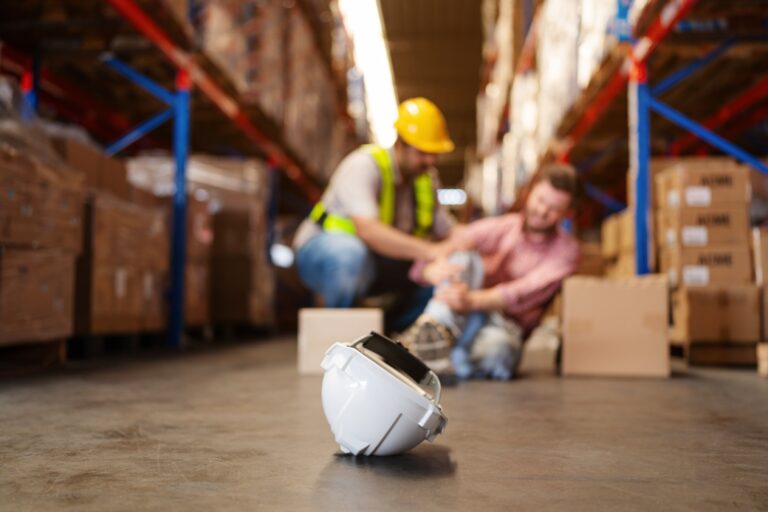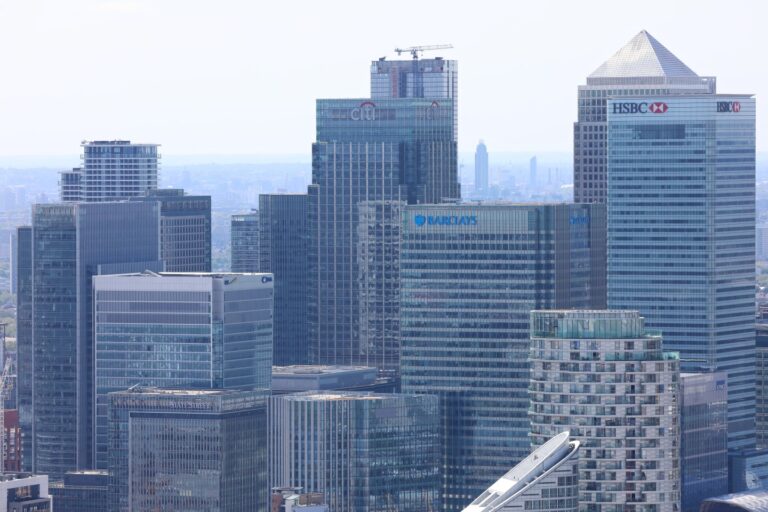What do slips and trips at work look like?
The Health and Safety Executive (HSE) lays out clear guidance to minimise the risk of slips and trips in the workplace. Even if companies largely follow these guidelines, one misjudged move can cause a serious accident.
Slips and trips in the workplace could involve slipping where a wet patch hasn’t been signposted properly or where the flooring itself is slippery. You’re also more likely to slip or trip if somewhere isn’t well-lit due to lights not working properly. If there are obstructions or loose floor coverings in your place of work, this could cause you to trip. Working in icy conditions onsite can also cause slips and trips.
You could be eligible to make a fall at work claim if the accident was caused by your employer. They have a duty of care to always keep workers safe and a breach of care could make them liable for your injury.
Who is most at risk of slips and trips at work?
Anyone is at risk of a slip and trip in the workplace. Even if your job is mostly desk-based, all it takes is one incident to sustain a serious injury. According to the HSE, slips and trips are the most common cause of major injuries at work and 95% of major slips can result in broken bones.
While everyone is at risk from slips and trips at work, those who work in more hazardous industries experience a higher risk of injury. If you work on your feet for most of your shift and are exposed to more hazards, such as heavy objects or spillages, you could be more prone to injury. If you work at height, slips and trips are especially dangerous and can even be fatal.
What kind of injuries can be sustained from slips and trips at work?
Several types of injury can be caused by slips and trips at work:
- Head and brain injuries
- Spinal injuries
- Broken bones or fractures
- Ankle injuries
- Facial injuries
- Hip injuries
- Shoulder injuries
Depending on the severity of your injury, you could experience long-lasting impacts that prevent you from returning to work for a long period or at all. This is why it’s so important to seek legal advice if the incident was at the hands of your employer. You could be able to claim trip at work compensation that will help you and your loved ones move forward.
Can you claim for a fall at work?
Your employer has a duty of care to ensure workers are always safe. If this duty of care is breached, it can make workers vulnerable to accidents, such as slips and trips at work. You shouldn’t have to work with the fear of sustaining an injury due to negligence from your employer.
If you become injured at work and it wasn’t your fault, a fall at work claim could mean you receive rightful compensation. Simply contact us to speak to a specialist solicitor to get started.
Why make a fall at work claim?
Slip and fall and work compensation could signal a new chapter in your recovery. It can help you access better rehabilitation and support, both in a mental and physical sense.
Sadly, some injuries are so serious that the person affected cannot work again. Trip at work compensation can cover a loss of earnings so that you or any loved ones can continue to be supported under these new circumstances. The right compensation can help to protect your future.
A successful claim also means you can hold the responsible party accountable and help prevent others from experiencing the same thing.
It’s understandable to find the prospect of making a claim daunting. However, take comfort in the fact that our fall at work compensation claim lawyers are highly experienced in handling sensitive cases. They will guide you through each step with clear and concise communication throughout.


















